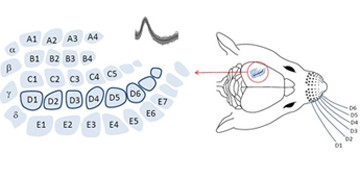
The Arabzadeh Group - Neural Coding
The Neural Coding Group has a broad interest in systems neuroscience spanning areas such as sensory coding, adaptation and behaviour.
Research themes
About
A principal goal of systems neuroscience is to quantify brain activity underlying the complex adaptive behaviour of organisms. We study sensory processing at the level of single cells, circuits and brain pathways. How do single neurons and neuronal populations encode different stimuli? How does the brain ignore less relevant stimulus features and focus on those that are informative to a behavioural task? The Neural Coding Group has a broad interest in systems neuroscience spanning areas such as sensory coding, adaptation and behaviour. We perform neuronal recording from cortex and deep brain structures in anaesthetised as well as awake behaving rodents, and apply methods such as information theory to quantify the way by which single neurons or neuronal ensembles code for sensory stimuli or for the animal's behaviour.

The rat whisker-barrel pathway is our model system of choice. It is also the rat's sensory system of choice for exploring the environment and collecting information about the location, shape, size and texture of objects around it (Diamond & Arabzadeh, 2012). The system is well suited to examining neural coding issues because of its functional efficiency and its elegant structural organisation. The whisker area of somatosensory cortex (known as barrel cortex) is arranged as a topographic map of the whiskers (Woolsey and Van der Loos, 1970; Welker 1971). This means that sensory signals arising in one whisker are channelled through a restricted population of neurons and can be characterised by recording electrodes or through optical imaging.









